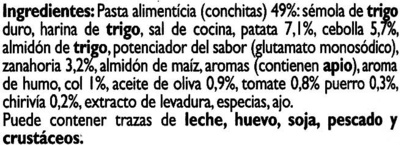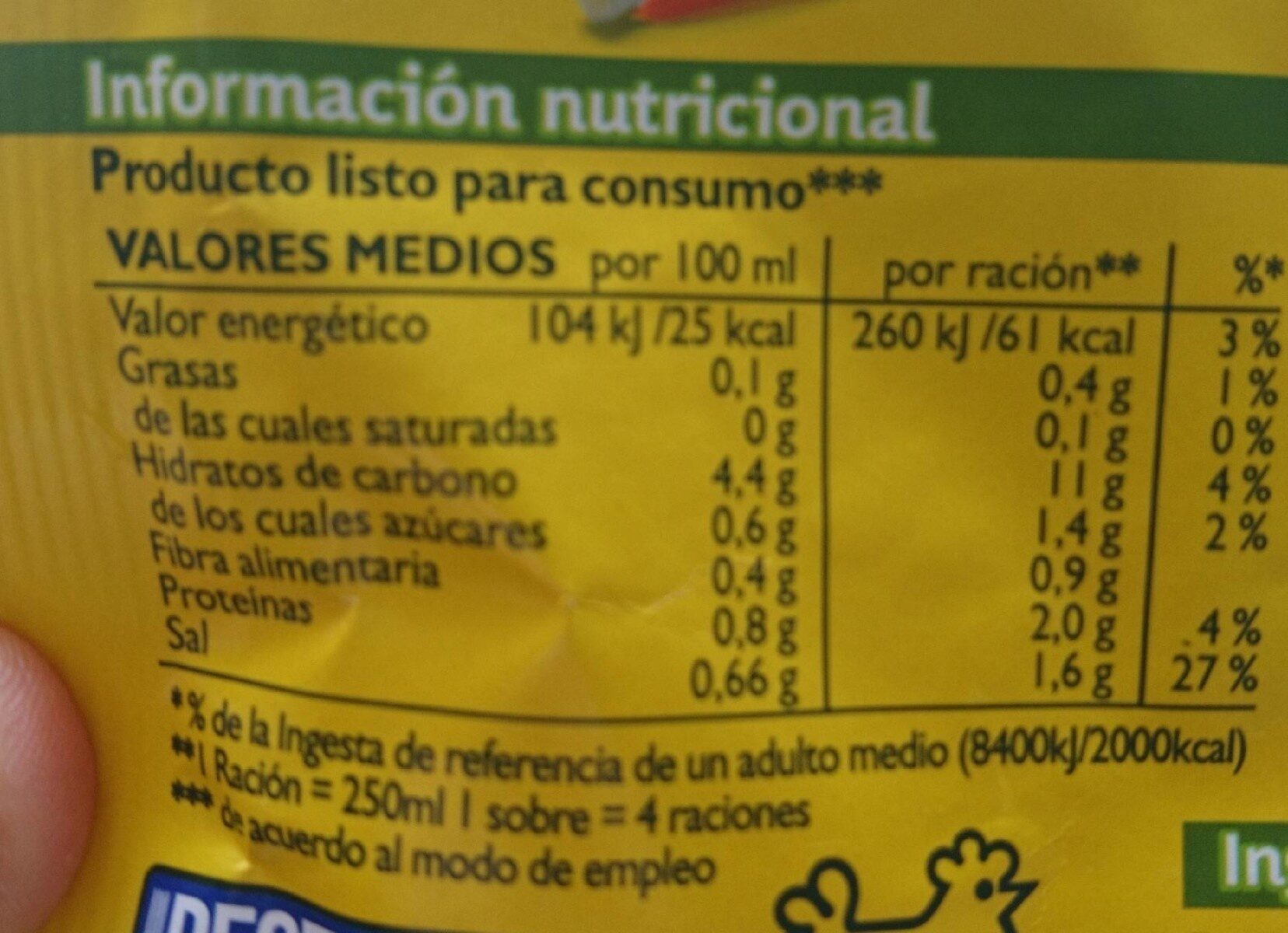Sopa jardinera - Gallina Blanca - 71 g
This product page is not complete. You can help to complete it by editing it and adding more data from the photos we have, or by taking more photos using the app for Android or iPhone/iPad. Thank you!
×
Barcode: 8410300101390 (EAN / EAN-13)
Common name: Sopa jardinera deshidratada
Quantity: 71 g
Packaging: es:Sobre de papel y aluminio
Brands: Gallina Blanca
Categories: Plant-based foods and beverages, Plant-based foods, Fruits and vegetables based foods, Meals, Dried products, Dried products to be rehydrated, Soups, Dried meals, Vegetable soups, Dehydrated soups, Dehydrated vegetable soups
Labels, certifications, awards: Vegetarian, Vegan
Manufacturing or processing places: Sant Joan Despí, Barcelona (provincia), Cataluña, España
Traceability code: ES 26.00065/B CE, FABRICANTE Y ENVASADOR:, GALLINA BLANCA S.A.U., PERTENECIENTE A:, GALLINA BLANCA STAR
Link to the product page on the official site of the producer: http://www.gallinablanca.es/producto/sop...
Stores: Carrefour
Countries where sold: Spain
Matching with your preferences
Environment
Carbon footprint
Packaging
Transportation
Report a problem
Data sources
Product added on by javichu
Last edit of product page on by kiliweb.
Product page also edited by acuario, musarana, openfoodfacts-contributors, packbot, quentinbrd, yuka.ZDdnWkRMME11ZWNoeXRnNDJoRHJxOWRiNm9MNURFK2VHckU5SUE9PQ, yuka.sY2b0xO6T85zoF3NwEKvlkIXdfvlsxf_aDftlBC5z4uhBJLFUexfuKHmHKo.








